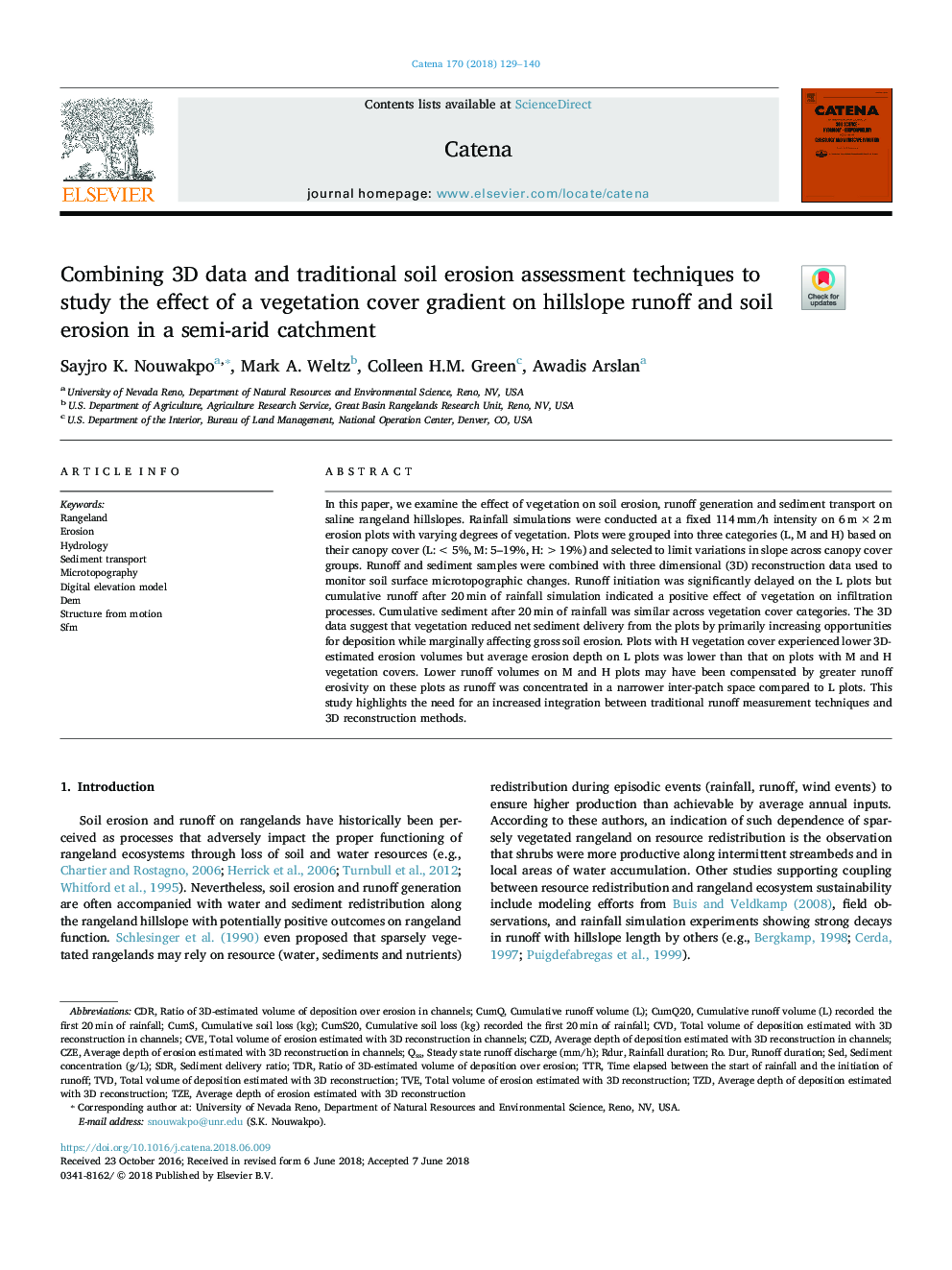| Article ID | Journal | Published Year | Pages | File Type |
|---|---|---|---|---|
| 8893385 | CATENA | 2018 | 12 Pages |
Abstract
In this paper, we examine the effect of vegetation on soil erosion, runoff generation and sediment transport on saline rangeland hillslopes. Rainfall simulations were conducted at a fixed 114â¯mm/h intensity on 6â¯mâ¯Ãâ¯2â¯m erosion plots with varying degrees of vegetation. Plots were grouped into three categories (L, M and H) based on their canopy cover (L: <5%, M: 5-19%, H: >19%) and selected to limit variations in slope across canopy cover groups. Runoff and sediment samples were combined with three dimensional (3D) reconstruction data used to monitor soil surface microtopographic changes. Runoff initiation was significantly delayed on the L plots but cumulative runoff after 20â¯min of rainfall simulation indicated a positive effect of vegetation on infiltration processes. Cumulative sediment after 20â¯min of rainfall was similar across vegetation cover categories. The 3D data suggest that vegetation reduced net sediment delivery from the plots by primarily increasing opportunities for deposition while marginally affecting gross soil erosion. Plots with H vegetation cover experienced lower 3D-estimated erosion volumes but average erosion depth on L plots was lower than that on plots with M and H vegetation covers. Lower runoff volumes on M and H plots may have been compensated by greater runoff erosivity on these plots as runoff was concentrated in a narrower inter-patch space compared to L plots. This study highlights the need for an increased integration between traditional runoff measurement techniques and 3D reconstruction methods.
Keywords
Related Topics
Physical Sciences and Engineering
Earth and Planetary Sciences
Earth-Surface Processes
Authors
Sayjro K. Nouwakpo, Mark A. Weltz, Colleen H.M. Green, Awadis Arslan,
